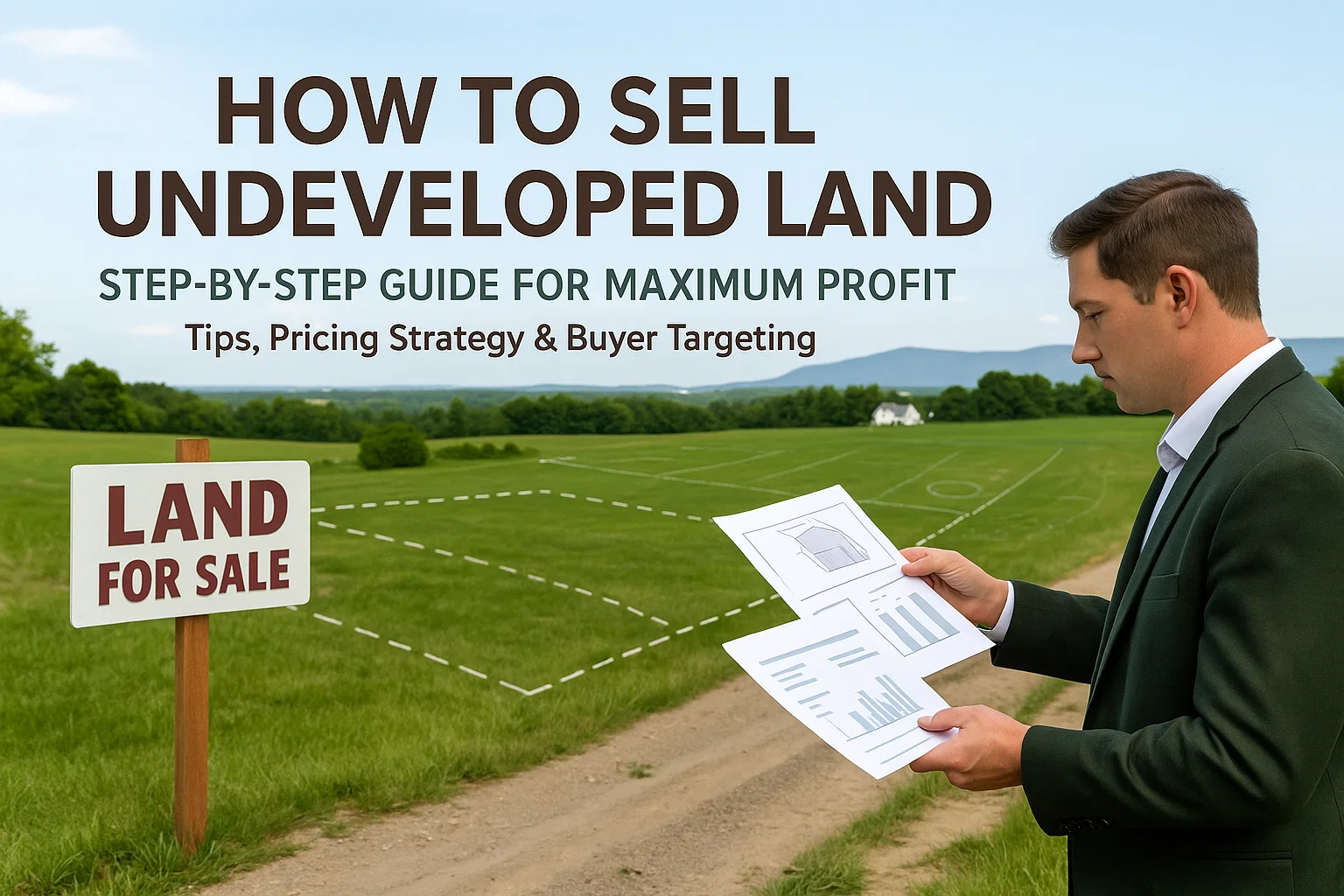Selling undeveloped land presents unique challenges compared to selling homes or commercial properties. Without structures or improvements, vacant land requires different strategies to attract buyers and secure the best possible price. Whether you’ve inherited a rural parcel or are divesting an investment property, understanding the specific nuances of land sales can make the difference between a quick, profitable transaction and a lengthy, frustrating experience.
This comprehensive guide walks you through the entire process of selling undeveloped land, from initial research to closing the deal. We’ll cover essential strategies for determining fair market value, effective marketing techniques to reach the right buyers, and critical legal considerations that protect your interests throughout the transaction.
Unique Challenges and Opportunities of Selling Undeveloped Land
Selling undeveloped land differs significantly from selling improved properties. The market for vacant land is typically smaller, with fewer potential buyers and longer selling timelines. However, this specialized market also presents unique opportunities for sellers who understand how to position their property effectively.
Opportunities
- Lower carrying costs than improved properties
- Potential for seller financing with higher interest rates
- Fewer disclosure requirements in most states
- No concerns about property condition or repairs
- Opportunity to target specific buyer segments (developers, recreational users, investors)
Challenges
- Smaller pool of potential buyers
- Longer average time on market
- Difficulty obtaining traditional financing for buyers
- Valuation complexities without comparable sales
- Marketing requires highlighting potential rather than existing features
Understanding these fundamental differences allows you to set realistic expectations and develop an effective strategy for selling your undeveloped land. The key to success lies in thorough preparation, accurate pricing, and targeted marketing to the right audience.
| Get a Professional Land Valuation Not sure what your undeveloped land is worth? Get a free professional valuation from land specialists who understand your local market. Request Free Land Valuation |
Step 1: Research Zoning Laws and Land Use Restrictions
Before listing your undeveloped land, thoroughly research all zoning regulations and restrictions that apply to your property. These factors significantly impact your land’s value and marketability by determining what buyers can legally do with the property.
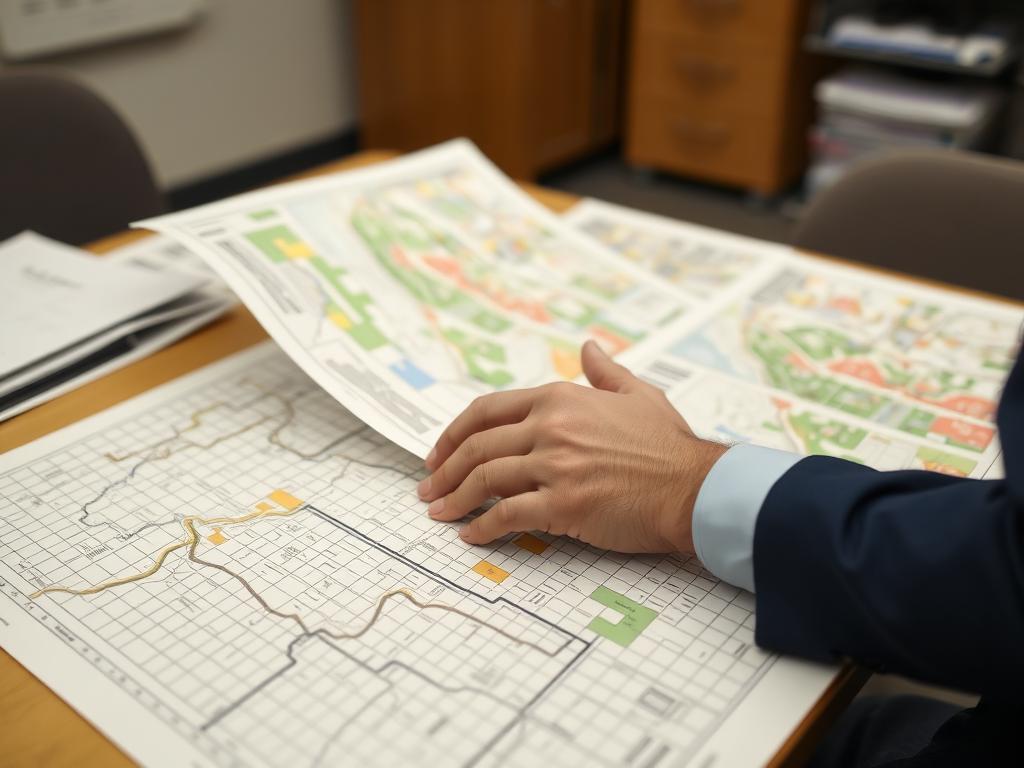
Essential Zoning Information to Gather
- Current zoning classification – Residential, commercial, agricultural, industrial, etc.
- Permitted uses – What activities and structures are allowed without special permission
- Conditional uses – Activities that may be permitted with special approval
- Minimum lot size requirements – For building or subdivision purposes
- Setback requirements – Mandatory distances from property lines for structures
- Height restrictions – Maximum building heights allowed
- Environmental restrictions – Wetlands, protected habitats, flood zones
Where to Find Zoning Information
Contact your local planning department or visit their website to obtain official zoning information. Many counties now offer online GIS (Geographic Information System) portals where you can view zoning maps and regulations. Gathering this information upfront allows you to accurately represent your property to potential buyers and avoid surprises that could derail a sale later.
Pro Tip: Request a zoning verification letter from your local planning department. This official document confirms the current zoning status and can be shared with potential buyers to increase confidence in your listing.
Step 2: Determine the Right Pricing Strategy
Pricing undeveloped land correctly is perhaps the most crucial factor in a successful sale. Set the price too high, and your property will languish on the market; too low, and you leave money on the table. Use these approaches to arrive at a competitive asking price:
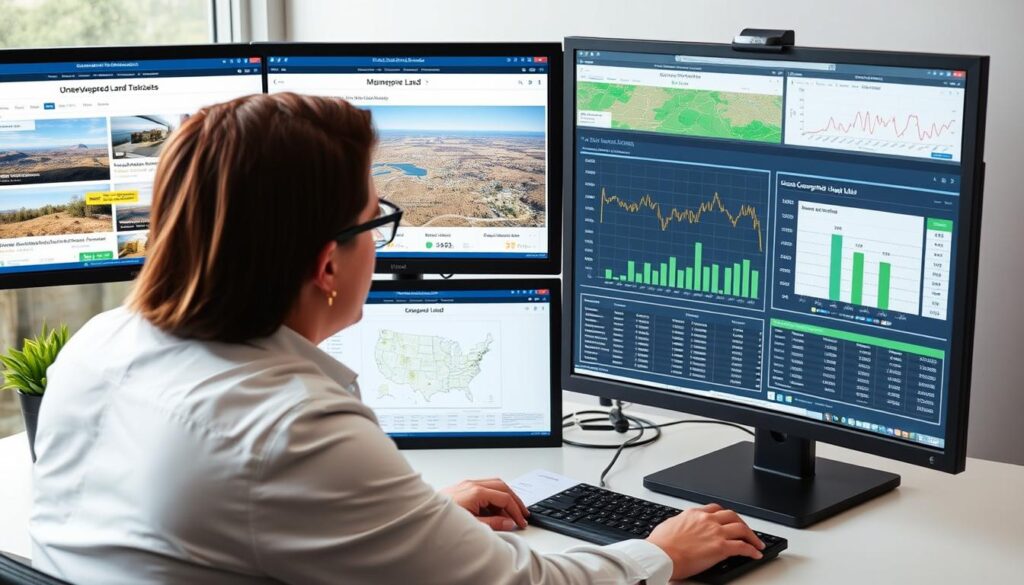
Comparative Market Analysis
Research recent sales of similar undeveloped parcels in your area. Look for properties with comparable:
- Size and acreage
- Zoning classification
- Topography and natural features
- Access to roads and utilities
- Proximity to amenities and developments
Professional Appraisal
Consider hiring a professional appraiser who specializes in vacant land. They’ll use methods like the sales comparison approach, income approach (for income-producing land), and development approach to determine fair market value. While this involves an upfront cost, an appraisal provides credibility when justifying your asking price to potential buyers.
Market Trends Analysis
Research broader market trends affecting land values in your region. Factors like population growth, development patterns, and economic conditions influence demand for undeveloped land. In growing areas, land values may be trending upward, while in declining markets, you may need to price more aggressively.
“The single biggest mistake landowners make is overpricing their property based on emotional attachment rather than market reality. Realistic pricing based on solid research is the foundation of a successful land sale.”
– Experienced Land Broker
Step 3: Implement Effective Marketing Tactics
Marketing undeveloped land requires highlighting its potential rather than existing features. Your goal is to help buyers envision what they could do with the property. A multi-channel approach reaches different buyer segments effectively.
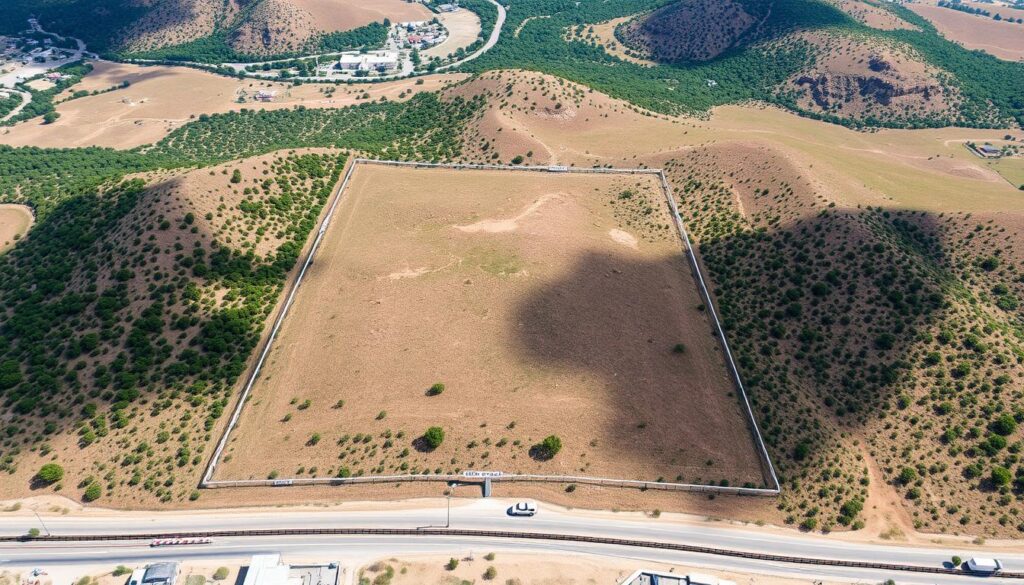
Online Platforms
List your property on websites specializing in land sales:
- Land-specific sites – LandWatch, LandFlip, Land.com
- General real estate platforms – Zillow, Realtor.com, Trulia
- Local classifieds – Craigslist, Facebook Marketplace
- Social media – Facebook groups for land investors, Instagram with location tags
Professional Photography and Mapping
Invest in high-quality visuals that showcase your property’s best features:
- Aerial drone photography to show boundaries and topography
- Ground-level photos highlighting notable features (views, water features, mature trees)
- Detailed property maps showing boundaries, access points, and topographical features
- Virtual tours or video walkthroughs of the property
Targeted Buyer Outreach
Identify and directly contact potential buyers based on your land’s best use:
- Developers – For land with development potential near growing areas
- Builders – For parcels zoned for residential construction
- Recreational users – For hunting, fishing, or camping properties
- Neighboring property owners – Who may want to expand their holdings
- Investors – Looking for land to hold for future appreciation
Physical Signage
Place a professional “For Sale” sign on the property with your contact information. For remote properties, ensure the sign is visible from the nearest public road. Consider adding a QR code that links to your online listing for additional information.
| Need Help Marketing Your Land? Our network of land specialists can create professional listings with drone photography, detailed maps, and targeted marketing to reach qualified buyers. Get Professional Marketing Help |
Step 4: Address Legal Considerations
Selling undeveloped land involves several legal considerations that protect both you and potential buyers. Addressing these issues proactively prevents delays and complications during the sale process.

Title Research and Clearing Issues
Conduct a thorough title search to identify any potential issues that could affect your ability to sell the property:
- Outstanding liens or judgments
- Easements or rights-of-way
- Boundary disputes or encroachments
- Mineral or timber rights owned by others
- Restrictive covenants or deed restrictions
Address any issues discovered during the title search before listing your property. This may involve paying off liens, resolving boundary disputes, or clarifying easement terms.
Environmental Assessments
Consider conducting environmental assessments to identify any potential issues:
- Phase I Environmental Site Assessment for potential contamination
- Wetland delineation if wetlands are suspected
- Endangered species habitat assessment if required in your area
- Soil testing for agricultural properties
Survey and Boundary Verification
A current property survey confirms exact boundaries and acreage, which builds buyer confidence and prevents future disputes. If your existing survey is outdated or you don’t have one, consider investing in a new survey, especially for higher-value properties.
Disclosure Requirements: While disclosure requirements for vacant land are typically less stringent than for improved properties, you must still disclose known material defects that would affect the property’s value. Check your state’s specific disclosure requirements for land sales.
Step 5: Master Negotiation Strategies for Land Sales
Negotiating the sale of undeveloped land requires different tactics than residential property sales. Understanding buyer motivations and common objections helps you negotiate effectively.
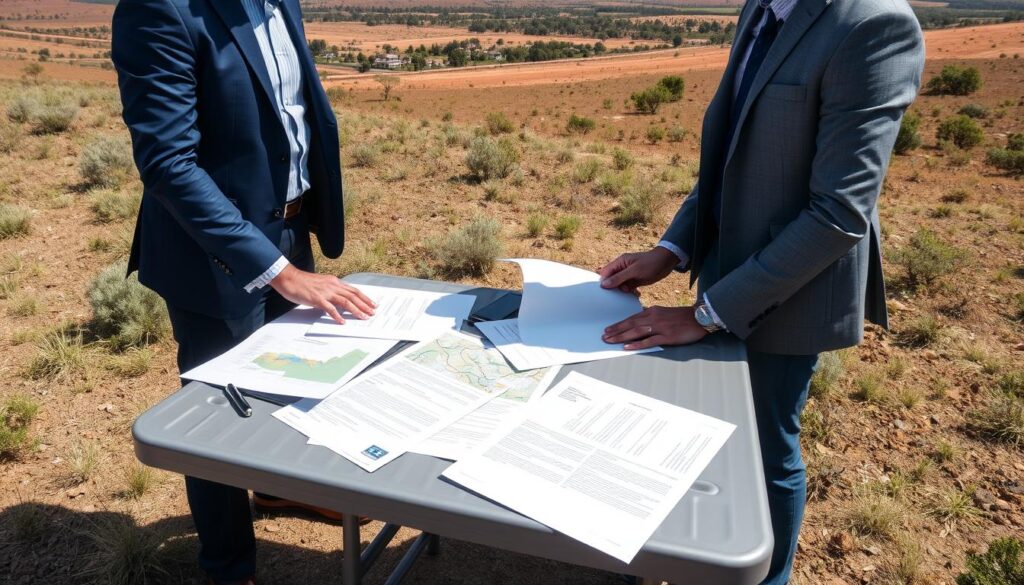
Understanding Buyer Financing Challenges
Traditional lenders often impose stricter requirements for land loans, including higher down payments and interest rates. Be prepared to discuss financing options with potential buyers:
- Consider offering seller financing to expand your buyer pool
- Be familiar with local banks that specialize in land loans
- Understand how zoning affects financing options
- Be prepared for longer closing timelines if financing is involved
Effective Counteroffers
When receiving offers below your asking price, consider these strategies:
- Counter with documentation supporting your asking price
- Consider non-price terms that might be valuable (faster closing, as-is sale)
- Offer to include additional items (timber rights, equipment, development plans)
- Propose a phased purchase for larger parcels
Creative Deal Structures
Beyond traditional sales, consider alternative arrangements that might appeal to buyers:
- Owner financing with reasonable interest rates
- Lease-to-own options for buyers needing time to arrange financing
- Joint venture opportunities with developers
- Partial sales of larger acreage
5 Mistakes to Avoid When Selling Vacant Land
Even experienced property owners can make costly errors when selling undeveloped land. Avoid these common pitfalls to maximize your profit and minimize stress.
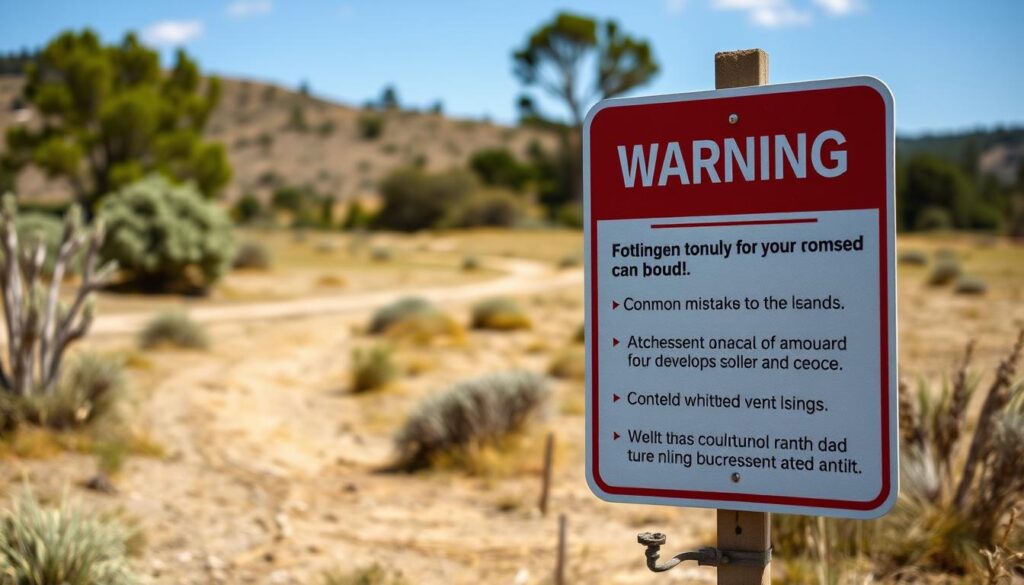
1. Inadequate Research
Failing to thoroughly research zoning, restrictions, and market conditions before listing. This leads to unrealistic expectations and potential legal issues later.
Solution: Invest time upfront to understand all aspects of your property, including legal restrictions, access rights, and comparable sales.
2. Overpricing
Setting an unrealistically high price based on emotional attachment rather than market data. This extends time on market and can stigmatize your property.
Solution: Base your asking price on recent comparable sales and professional appraisals, not on what you “need” or hope to get.
3. Poor Documentation
Lacking essential documents like surveys, title reports, and environmental assessments that buyers need to make informed decisions.
Solution: Gather all relevant documentation before listing and make it readily available to serious prospects.
4. Inadequate Marketing
Relying solely on general real estate platforms without targeting specific buyer segments interested in undeveloped land.
Solution: Use land-specific listing sites, professional photography, and targeted outreach to potential buyers based on your land’s best use.
5. Ignoring Buyer Financing Challenges
Failing to understand or address the financing difficulties buyers face when purchasing undeveloped land.
Solution: Be prepared to discuss financing options, including seller financing, with potential buyers who may struggle to secure traditional loans.
6. Neglecting Property Presentation
Showing the property in poor condition with overgrown access points, trash, or unclear boundaries.
Solution: Clear access points, mark boundaries, remove debris, and consider basic improvements like grading access roads to make a better impression.
Documents Needed to Sell Land Fast: Seller’s Checklist
Being prepared with the right documentation accelerates the selling process and builds buyer confidence. Use this checklist to gather essential documents before listing your undeveloped land.
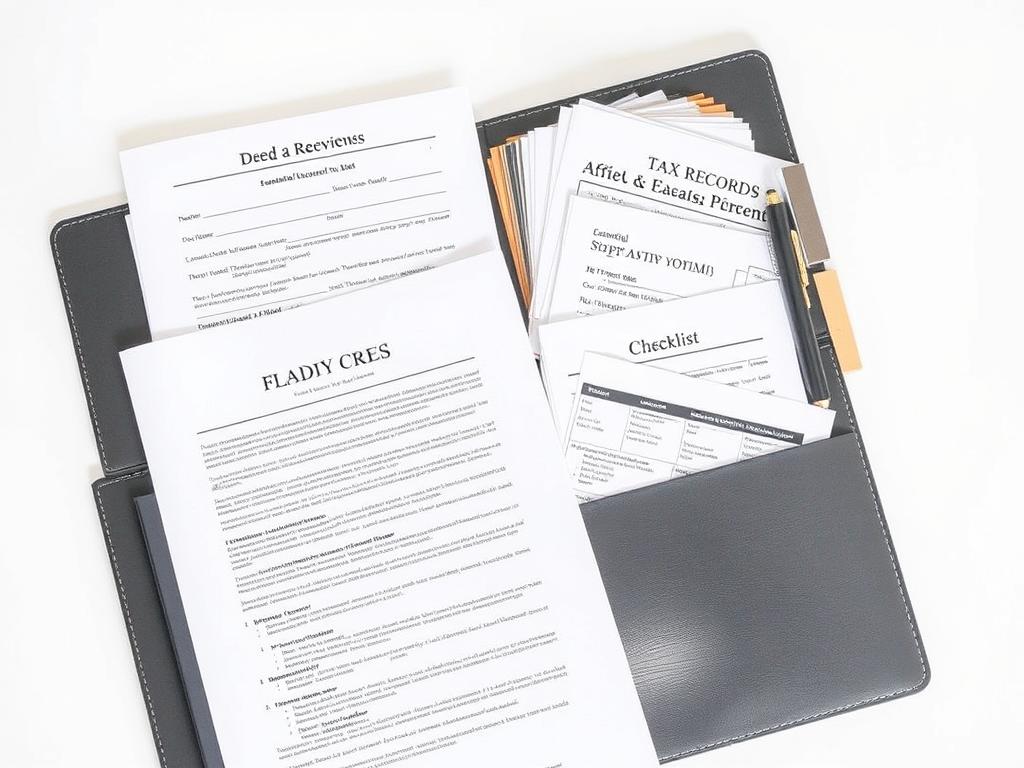
| Document Type | Purpose | Where to Obtain | Importance |
| Property Deed | Proves ownership and contains legal description | County Recorder’s Office | Essential |
| Property Survey | Shows boundaries, acreage, and features | Previous survey or new survey from licensed surveyor | Highly Recommended |
| Title Report | Reveals liens, easements, and encumbrances | Title company | Essential |
| Tax Records | Shows payment status and assessed value | County Tax Assessor | Essential |
| Zoning Verification | Confirms allowed uses and restrictions | Local Planning Department | Highly Recommended |
| Environmental Reports | Identifies potential environmental issues | Environmental consultant | Varies by property |
| Utility Information | Details available utilities or connection options | Local utility companies | Recommended |
| Soil/Perc Test Results | Indicates suitability for septic systems | Environmental engineer | Important for rural residential land |
| Flood Zone Certification | Identifies flood risk status | FEMA or surveyor | Recommended |
| Property Tax Bill | Shows annual tax obligation | County Tax Collector | Essential |
Important: Keep digital copies of all documents organized and readily available to share with serious buyers. This preparation demonstrates professionalism and accelerates the due diligence process.
| Ready to Sell Your Undeveloped Land? Get connected with land specialists who can help you navigate the entire selling process from valuation to closing. Get Your Free Land Valuation Today |
Frequently Asked Questions About Selling Undeveloped Land

Is undeveloped land hard to sell?
Undeveloped land typically takes longer to sell than improved properties due to a smaller buyer pool and financing challenges. Average time on market ranges from 3-12 months depending on location, zoning, and pricing. Rural or remote parcels without utilities or clear development potential may take even longer. However, properly priced land with desirable features and effective marketing can sell relatively quickly, especially in growing areas with strong demand.
What adds value to vacant land?
Several factors can significantly increase the value of undeveloped land:
- Location and accessibility – Proximity to growing areas, good road access
- Utilities – Available water, sewer, electricity, or internet connections
- Zoning – Favorable zoning for development or specific uses
- Topography – Usable terrain with good drainage and views
- Natural features – Water frontage, mature trees, scenic views
- Entitlements – Approved permits or development plans
- Subdivision potential – Ability to divide into multiple parcels
Strategic improvements like adding a gravel access road, clearing building sites, or securing preliminary approvals can increase value beyond their cost.
Should I use a real estate agent to sell my land?
Whether to use an agent depends on your situation. Consider these factors:
Using an agent may be beneficial if:
- You’re unfamiliar with the local land market
- You don’t have time to market the property and show it to prospects
- Your land has complex features requiring specialized knowledge
- You need access to a network of qualified buyers
Selling without an agent may work if:
- You have experience in real estate transactions
- You’re willing to invest time in marketing and showing the property
- You want to avoid paying commission (typically 6-10% for land)
- You already have potential buyers in mind
If you do use an agent, choose one who specializes in land sales rather than residential properties.
What is the best time of year to sell undeveloped land?
The optimal selling season varies by region and property type:
- Spring and summer are generally best for most properties when weather permits easier viewing and features are most visible
- Fall can be ideal for hunting properties as buyers prepare for hunting season
- Winter may work well in southern regions with mild climates
However, market conditions and proper pricing typically matter more than season. A well-priced property with good marketing can sell in any season.
How do I handle access issues when selling land?
Limited or complicated access can significantly impact marketability. Address access issues by:
- Confirming legal access rights and documenting them clearly
- Securing formal easements if your property requires crossing others’ land
- Improving physical access (clearing paths, adding gravel)
- Providing detailed access instructions and maps to prospects
- Being transparent about access limitations in your listing
For landlocked parcels, consult a real estate attorney about establishing necessary easements before listing.
Final Thoughts on Selling Undeveloped Land
Selling undeveloped land successfully requires thorough preparation, realistic pricing, targeted marketing, and patience. By understanding the unique aspects of land sales and avoiding common pitfalls, you can maximize your property’s value and find the right buyer. If you’re thinking, “How can I sell my house fast Tulsa residents trust?”, these same principles apply — proper preparation and smart strategy make all the difference.
Remember that each parcel of land is unique, with its own set of features, challenges, and potential uses. Take the time to understand what makes your property special and highlight those attributes in your marketing. Whether you choose to sell independently or work with a land specialist, the strategies outlined in this guide will help you navigate the process with confidence.
With proper research, documentation, and marketing, you can turn your undeveloped land into a profitable sale that benefits both you and the buyer who will give your property its next chapter.
| Start Your Land Selling Journey Today Ready to take the next step? Our land specialists can help you determine your property’s value and connect you with qualified buyers. Get Started Now |

